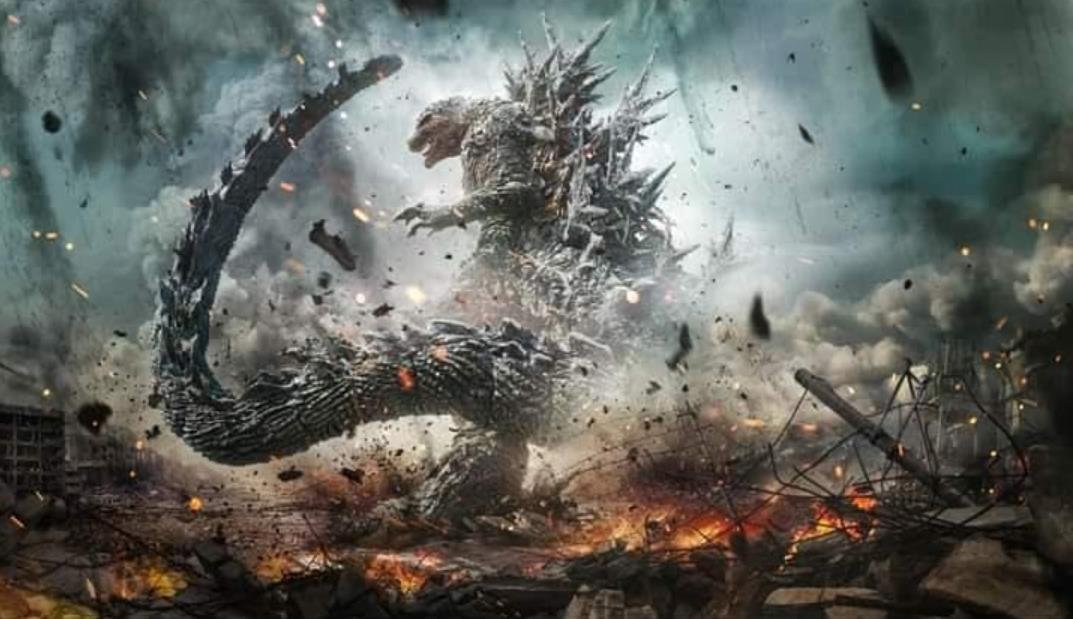Godzilla Minus One, the highly anticipated kaiju movie from Toho, made its North American premiere this past weekend after debuting in its native Japan last month. For the U.S. box office this week, the film surpassed all expectations with a $11 million gross and almost breaking records for foreign-language films. Before Godzilla Minus One was even released in the United States, it had already made $23 million in Japan. This implies that, despite having a very low stated budget of $15 million, the film has now made almost $35 million globally.
Godzilla Minus One opened at number 3 in the box office list in the United States, ahead of two animated films, Trolls Band Together and Wish, but behind Beyoncé’s debut film Renaissance: A Film and the sequel blockbuster The Hunger Games: The Ballad of Songbirds & Snakes. With $18 million in its first weekend and nearly $50 million in total revenue over its domestic run, this is the biggest Japanese live-action picture ever to make its domestic premiere.
Over five times as much money has been made by Godzilla Minus One thus far as Shin Godzilla (2016) made during its whole domestic run. IMAX film versions were incredibly well-liked, accounting for more than 13% of total domestic sales. This weekend, the movie brought in $1.7 million worldwide from 70 theaters, and its total IMAX take has now surpassed $4.6 million. In mid-week of December, the film’s premieres were released in Germany, Spain, and Australia as well.
There Is a Resurgence of the Godzilla Franchise
Godzilla Minus One, commemorating its 70th anniversary, is the 37th overall picture in the Godzilla franchise, which debuted in 1954 and was directed and written by Takashi Yamazaki. After Shin Godzilla ended its global run with a whopping $78 million, this is the second live-action movie of the current generation and the fifth episode in the Reiwa era of the franchise. Godzilla Minus One has received excellent reviews; it now has a “certified fresh” 97% rating on review aggregate Rotten Tomatoes.
Plot of the movie
In 1945, during World War II’s final days, Kōichi Shikishima, a kamikaze pilot, feigns a plane malfunction and lands on Odo Island. Tachibana, the lead mechanic, suggests that Shikishima deserted his duty. That night, Godzilla, a dinosaur-like creature, attacks. Shikishima, unable to shoot, loses consciousness. Awakening to find Tachibana as the lone survivor, who faults Shikishima for inaction.
Returning home in 1946, Shikishima finds his parents dead from the Tokyo bombing. Wrestling survivor’s guilt, he works as a minesweeper, supporting Noriko Ōishi, an orphan savior, and Akiko, an orphaned baby.
In 1947, Godzilla, mutated by U.S. nuclear tests, headed to Japan after devastating U.S. warships. U.S. aid declined due to Soviet tensions; MacArthur sent decommissioned Japanese ships.
Assigned to halt Godzilla’s approach in May 1947, Shikishima’s crew releases a mine into Godzilla’s mouth, causing significant harm. The Takao cruiser battles Godzilla but is destroyed by its atomic heat ray.
Shikishima shares his Godzilla encounter with Noriko. When Godzilla attacks Ginza, tanks engage but cause a nuclear blast, killing thousands. Noriko saves Shikishima, who is perishing in the explosion. Distraught, Shikishima vows revenge.
As the government refuses action, Kenji Noda plans Godzilla’s demise. Shikishima recruits
Tachibana, intends to detonate a plane inside Godzilla’s mouth. Shikishima entrusts Akiko to Sumiko. Executing the plan, Godzilla resurfaces, is drawn into a trap, and dragged down. Despite attempts, Godzilla survives. Shikishima’s plane detonates inside Godzilla, obliterating it. Reunited with Akiko, Shikishima visits Noriko in the hospital, marked by a creeping blackness. Godzilla’s flesh regenerates in the ocean, foreshadowing a potential return.
Critics’ Acclaim and Audience Reception:
The film received accolades for its groundbreaking visual effects, colossal monster battles, engaging storytelling, and character depth. Critics praised the film’s ability to balance adrenaline-pumping action with heartfelt moments, making it a standout addition to the monster movie genre. Audiences resonated with the film’s themes of courage, unity, and the sheer spectacle of witnessing these iconic monsters on the big screen.
Impact on the Franchise:
As the latest movie in the Godzilla franchise, “Godzilla Minus One” not only upholds the legacy of its predecessors but also reinvigorates the franchise, sparking excitement for future installments. The film’s success paved the way for potential sequels, spin-offs, and expanded cinematic universes centered around these legendary monsters.
Conclusion:
“Godzilla Minus One” roared its way to the top of the box office charts, leaving an indelible mark on audiences worldwide. Its colossal success not only cemented its place in cinematic history but also reignited the allure of monster movies, proving that the appeal of larger-than-life creatures and epic battles continues to captivate audiences across the globe. As the film continues to make waves at the U.S. box office this week, its legacy as a monumental cinematic achievement is bound to endure for years.


